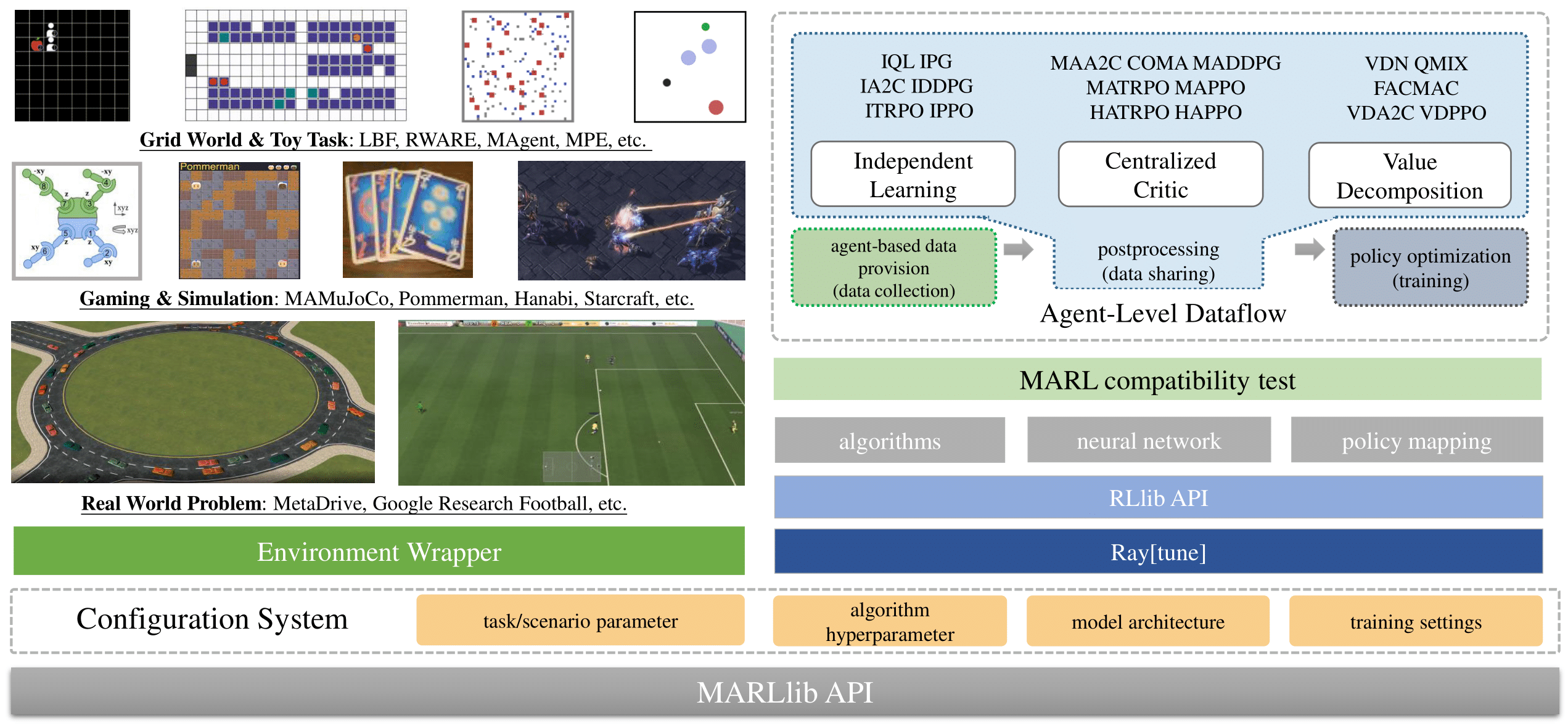Introduction#
Multi-Agent Reinforcement Learning Library (MARLlib) is a comprehensive Multi-Agent Reinforcement Learning algorithm library based on Ray and one of its toolkits RLlib. It provides MARL research community with a unified platform for building, training, and evaluating MARL algorithms.

Overview of the MARLlib architecture.#
MARLlib offers several key features that make it stand out:
MARLlib unifies diverse algorithm pipelines with agent-level distributed dataflow, allowing researchers to develop, test, and evaluate MARL algorithms across different tasks and environments.
MARLlib supports all task modes, including cooperative, collaborative, competitive, and mixed. This makes it easier for researchers to train and evaluate MARL algorithms across a wide range of tasks.
MARLlib provides a new interface that follows the structure of Gym, making it easier for researchers to work with multi-agent environments.
MARLlib provides flexible and customizable parameter-sharing strategies, allowing researchers to optimize their algorithms for different tasks and environments.
Using MARLlib, you can take advantage of various benefits, such as:
Zero knowledge of MARL: MARLlib provides 18 pre-built algorithms with an intuitive API, allowing researchers to start experimenting with MARL without prior knowledge of the field.
Support for all task modes: MARLlib supports almost all multi-agent environments, making it easier for researchers to experiment with different task modes.
Customizable model architecture: Researchers can choose their preferred model architecture from the model zoo, or build their own.
Customizable policy sharing: MARLlib provides grouping options for policy sharing, or researchers can create their own.
Access to over a thousand released experiments: Researchers can access over a thousand released experiments to see how other researchers have used MARLlib.
Before starting, please ensure you’ve installed the dependencies by following the Installation. The environment-specific description is maintained in Environments. Quick Start gives some basic examples.